Hildreth Meière Documentary Series - Watch Trailer
Hildreth Meière Documentary Series - Watch Trailer
Commissioned by: Philip FrohmanMedium: glass mosaicExecuted by: Ravenna Mosaics
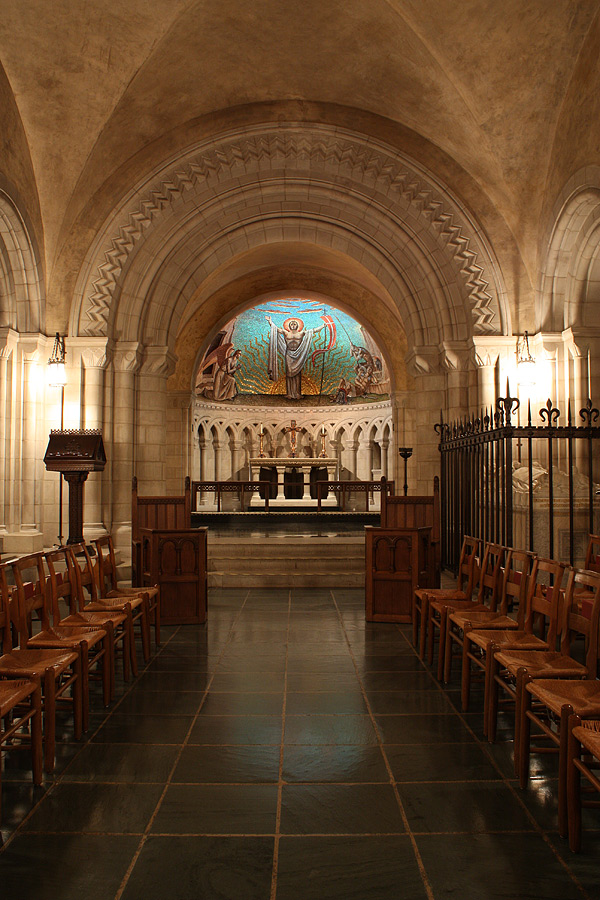
Chapel of the Resurrection
Architect Philip Frohman asked Hildreth Meière to design a Resurrection as an apse mosaic in the crypt chapel of Washington National Cathedral. She had just completed her second stained glass clerestory window for St. Bartholomew’s Church in New York. In negotiating her contract with the National Cathedral, Meière used her contract for the window at St. Bartholomew’s as an example of how she expected to be compensated. Meière received 30% upon signing the contract and completion of the first sketch; 30% when two of the three lancet windows were manufactured in the shop; 30% when the windows were delivered; and a final 10% within 30 days after installation.1
The dean of the cathedral wanted Frohman to critique the sketches that Meière submitted.
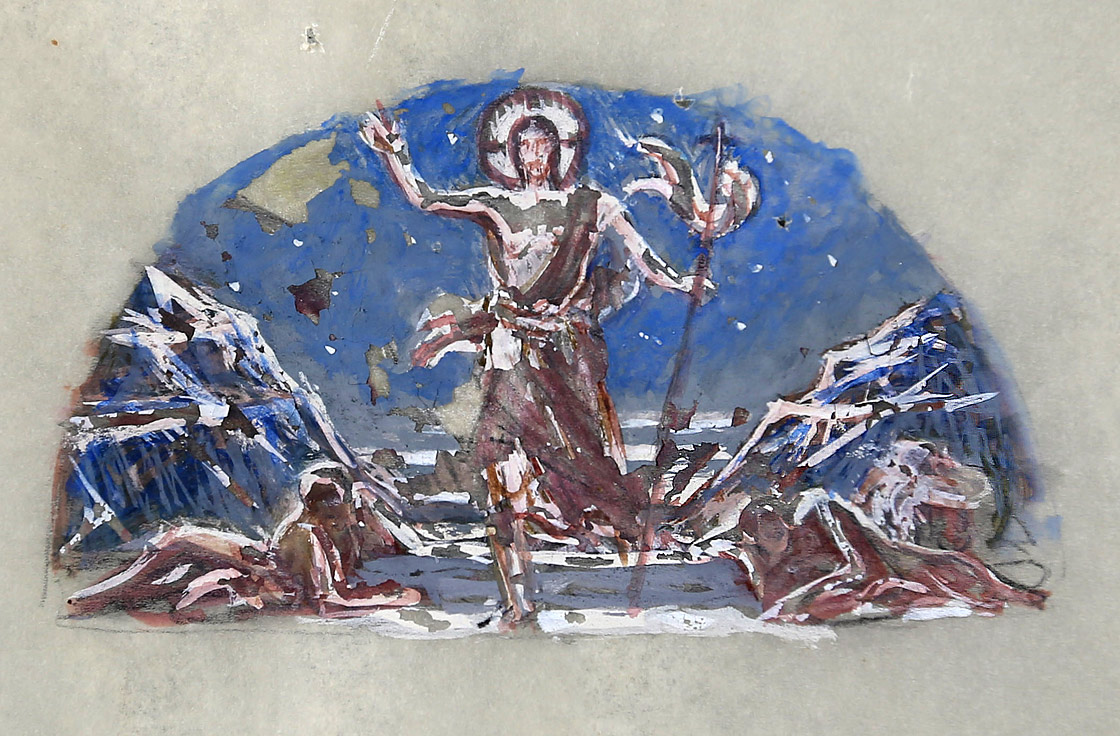
Earlier sketch with Christ in motion. Saint Louis University Archives DOC REC 50 (Ravenna Mosaic Company Records)
In an early design, Meière’s figure of Christ is in motion. Frohman had just read “Directives for the Building of a Church” by the President of Bonn University in Germany, a liturgical historian. According to the document, the wall behind the altar “should have repose and should not be like a snapshot of figures in motion.” Accordingly, Frohman did not want Meière’s figure of Christ to suggest movement of any kind.
Frohman also made several suggestions about Meière’s use of color and about increasing the proportion of the rays of the sun in relation to the size of the dome. He thought the figure of Christ was perhaps too fully clothed to suggest a moment following the resurrection. “However, I realize that the artist was guided by the desire to treat the subject in the most impressive and decorative manner,” he acknowledged.2
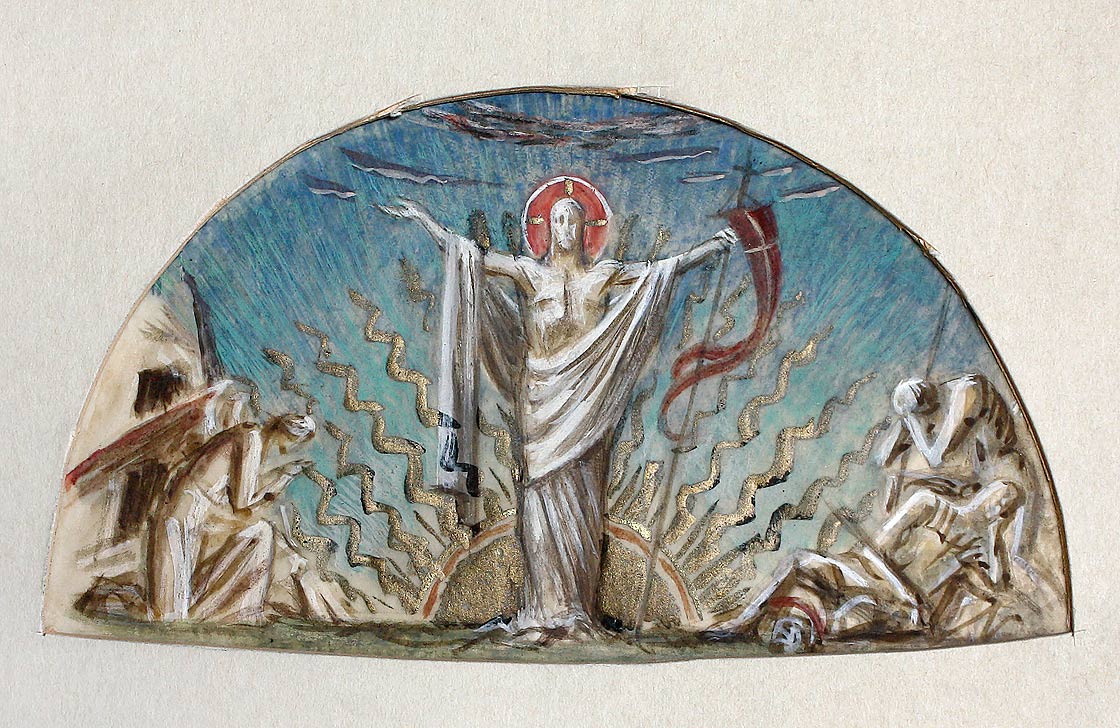
Final study with static Christ
In the final study, the figure of Christ is in a static pose, leading Frohman to conclude: “Mrs. Meière’s recent designs appear to fulfill the above requirements. They do not suggest movement, but represent Our Lord at a moment after His resurrection, standing triumphant over death.”3
Having had her design approved, Meière’s next step was to create a model to scale, which she took with her to Washington. She also wanted to test her full-scale cartoons in the apse, conceding that it was
perfectly possible that neither I nor anyone else will be satisfied with this first trial of the cartoons—the making of the drawings in sections which do not fit on the flat, and with distortions due to the curve is extremely difficult, and I am not sure that what I have is correct. It will be very helpful to me to have the chance to study them in place.4
Once the proportions and perspective were worked out, Ravenna Mosaics began to fabricate the mosaic. When Meière received word from Arno Heuduck at the Ravenna Mosaics factory that the mosaic was fifty percent complete, she traveled to St. Louis to see for herself:
I returned from a very satisfactory visit to St. Louis last night. The mosaics, I think, are really fine, and are completed well past the halfway mark—the figure of Christ, the sleeping soldiers, with cliffs beyond, half the angel and a good deal of sky are completed. . . .5
In preparation for the installation, Heuduck wrote to Frohman asking for “browncoat for the Resurrection Chapel mosaics ¾” thick, one part cement, one part lime, three parts sharp sand.” This undercoat needed to be scored before it set.6
Meière expected the Ravenna Mosaic Company’s installation to take from one week to ten days:
I will be down the following week, when they are ready to take the paper off. Until that time there would be nothing for me to do. The eventual “doing” will be supervising the staining of the light joints.7
Following the installation, Meière studied how to light the apse to show the details of the mosaic off to best advantage.8
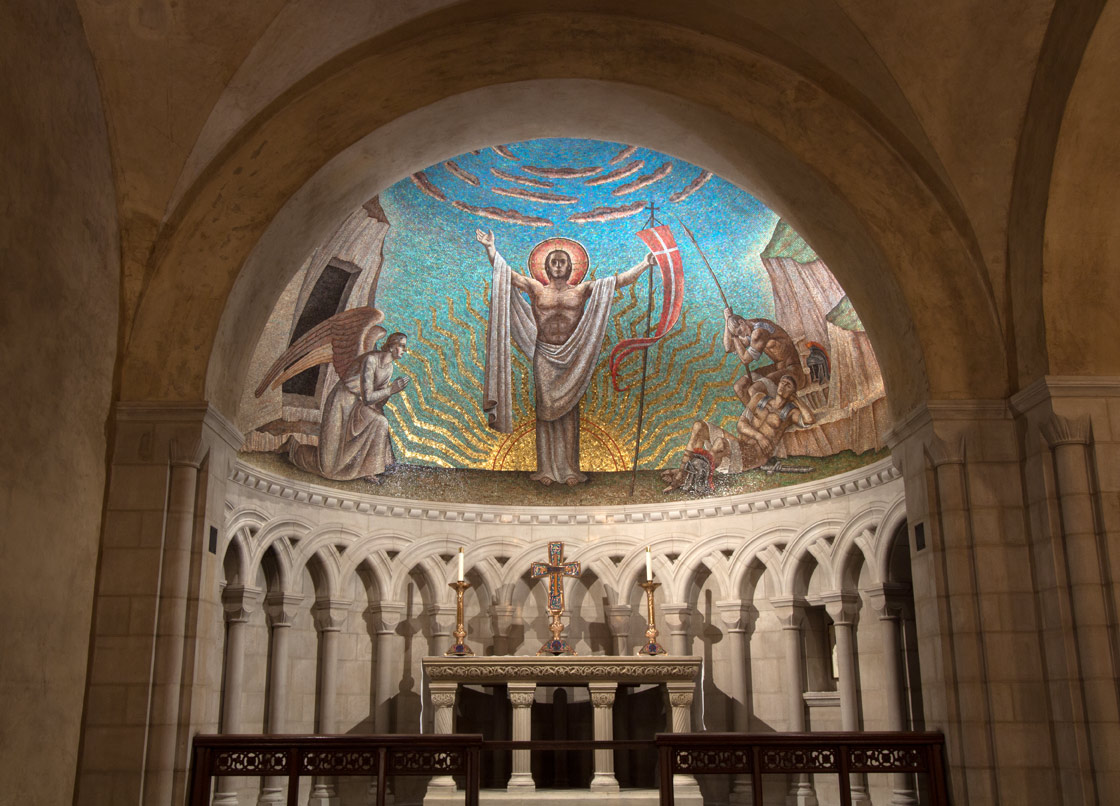
Apse mosaic with the Resurrection
Meière’s received her final payment for the apse mosaic together with a note: “You would certainly be gratified to hear the many very favorable comments which your work in the apse is constantly evoking.”9
Hildreth Meière, letter to B.W. Thoron, May 13, 1950, National Cathedral Archives (NCA).
Philip Frohman, letter to Dean Suter, June 21, 1950, NCA
Frohman, letter to Suter, June 21, 1950, NCA.
Meière, letter to Thoron, March 11, 1951, NCA.
Meière, letter to Thoron, May 27, 1951, NCA.
Arno Heuduck, letter to Frohman, August 11, 1951, NCA.
Meière, letter to Thoron, September 21, 1951, NCA.
Meière, letter to Thoron, October 28, 1951, NCA.
Canon Monks, letter to Meière, November 1, 1951, NCA.
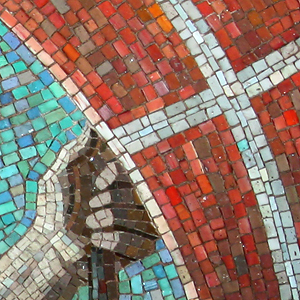
Washington National Cathedral
3101 Wisconsin Ave NW
Washington, DC 20016